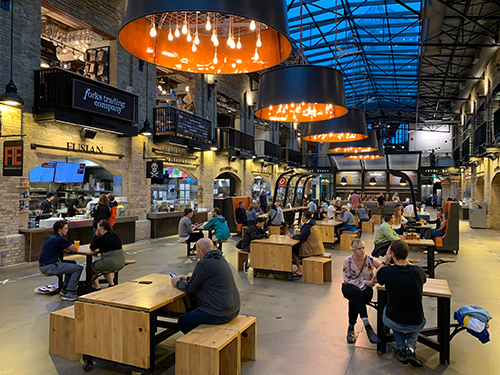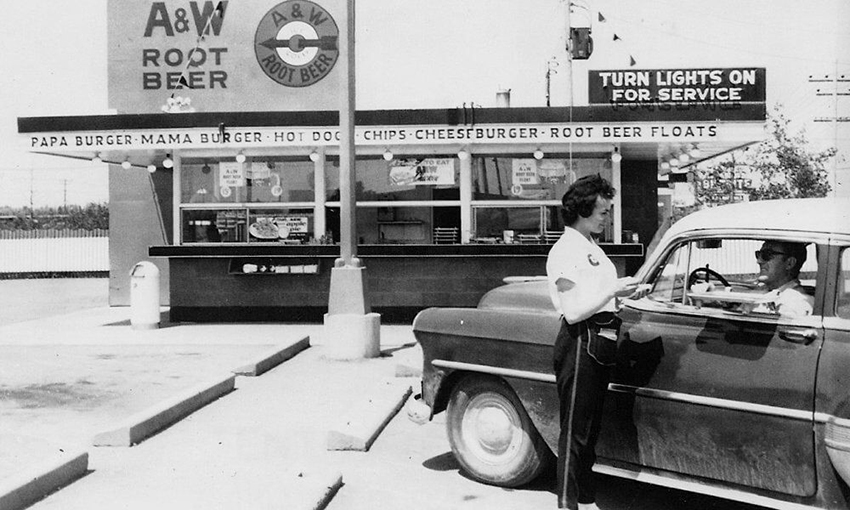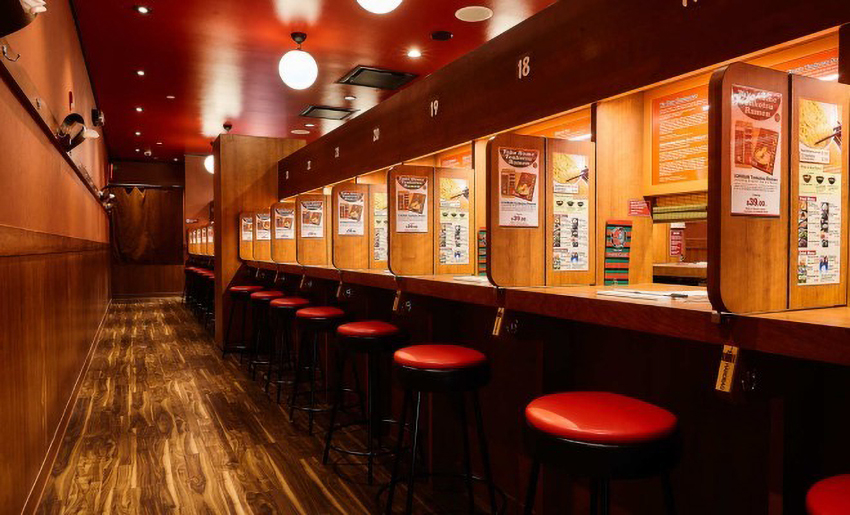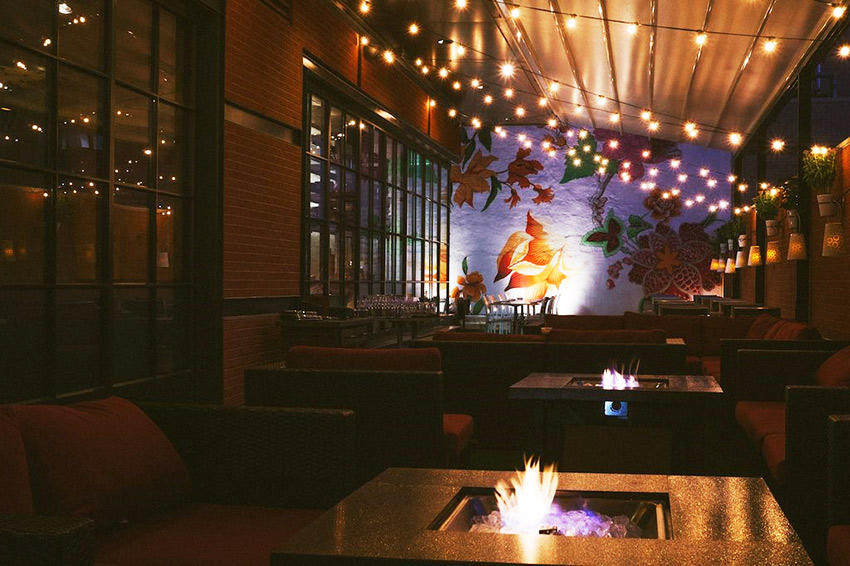
By Caroline Grimes, Interior Designer
 Dining out, something that was once a regular occurrence, something that was never really second guessed, is now something that everyone hesitates to do. Pre COVID-19 quarantine, going out for a bite to eat, ordering pizza because you didn’t feel like cooking, or even something as rudimentary as meeting someone at a restaurant for a date was a something out of everyday life.
Dining out, something that was once a regular occurrence, something that was never really second guessed, is now something that everyone hesitates to do. Pre COVID-19 quarantine, going out for a bite to eat, ordering pizza because you didn’t feel like cooking, or even something as rudimentary as meeting someone at a restaurant for a date was a something out of everyday life.
Photo: The Forks Market with social distancing implemented (Brent Bellamy).
But life isn’t exactly “everyday” or “regular” right now. With the burgeoning question of “what is the new normal”, designers and diners alike will have to think outside the box with regards to enjoying food. We’ve already seen many restaurants adapting with the addition of curbside pickup, take out windows, and increased ordering through food apps, but unfortunately, we’ve also seen some restaurants close permanently.
There has always been a life cycle of sorts in the restaurant business with places closing down and new ones popping up in their place, which begs the question, what will new restaurants that are designed and developed during this quarantine look like?
Perhaps, like the resurgence of drive in movie theatres, we’ll see more restaurants adopting an “A&W Drive-In” style and offering take out with limited in-place dining. For some businesses that are already situated in strip malls or with access to large parking areas this could be an interesting way to attract customers, especially in cities where the majority of people drive. It could be a potential attraction, a way to experience dining the way our parents and grandparents did while maintaining proper social distancing. The interior space could seamlessly integrate with the exterior and could provide some interesting opportunities to play with the line between landscape and interior environment.

Perhaps new restaurants will take to catering their ambiance and dining style to the individual. An important part of hospitality is understanding your customer. Not everyone today feels comfortable going out in groups or would be comfortable entering a restaurant or bar even with social distancing measures in place. Perhaps new restaurants will adapt a more singular style of serving. Popular ramen restaurant Ichiran, in Japan, features individualized booths where customers order a customized meal by checking off options on a menu and are served that meal through a small window. This form of dining is called “low-interaction dining” and specifically limits human to human contact; something that may be crucial in making the post COVID-19 customer happy. Designing an environment that focuses on the individual could provide the opportunity to introduce personalized details that speak to a smaller, more intimately tailored experience.

One of the first ways restaurants and bars have been able to open their doors during quarantine was opening their patio spaces. Winnipeg springs and summers are gorgeous seasons and there is no better way to enjoy them then with a cold drink on a beautiful patio, but unfortunately there are more than just two seasons in the year. With the eventual wrap up of the summer and “patio season” restaurants and bars will have to adapt to the change in weather. The need to get out of the house is even greater in the winter but the temperature creates a challenge.
Perhaps new restaurants, bars, and designers will have to rethink the traditional idea of “the patio”. Creating an outdoor destination much like the ever popular, and packed, Ice Bar at Festival du Voyageur could be a way to extend the patio season into the winter months should in-person dining still be restricted. Designing a luxurious space with fireplaces, integrated heaters, as well as a comfortable ambiance and seating just might dull the frost bite. This could be a unique opportunity to design an environment that embraces its natural harshness, harnesses it, and showcases the beauty of nature.

COVID-19 and its ramifications have caused the world as we know it to pause and think about the way we live our lives. As designers and diners, learning to rethink what we consider to be a hospitality space is important.
Recently David Rockwell, principal architect at Rockwell Group, spoke in an interview with FRAME magazine about the future of the traditional restaurant model. He commented that “[COVID-19] is going to force businesses to do more than one thing; perhaps restaurants might run cooking schools or a general store during the day in order to build a more resilient business model.”. This is not a new concept with establishments like Eataly becoming increasingly popular but could be a very lucrative way for restaurants to ensure stability moving forward. This will also encourage designers to think about how to design flexibility into a space and ensure that a space can transition in its use, potentially increasing its target demographics, throughout the day.
This designer thinks that part of defining the “new normal” is not about scrapping everything we have done before but truly evaluating where we have come from and assessing what is worth keeping and developing. The hospitality and entertainment world is no different. There are things that work, some that don’t, and some concepts that have potential to not only keep customers safe and happy but enrich their experience.
Caroline is an Interior Designer at Number TEN Architectural Group